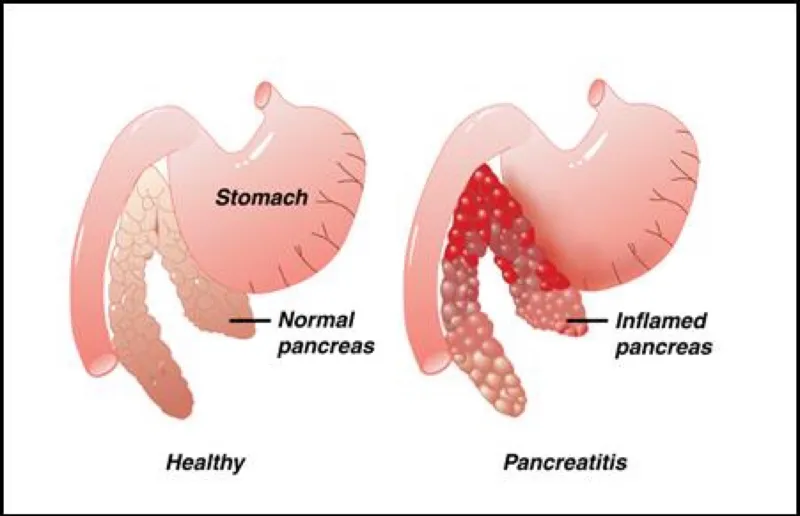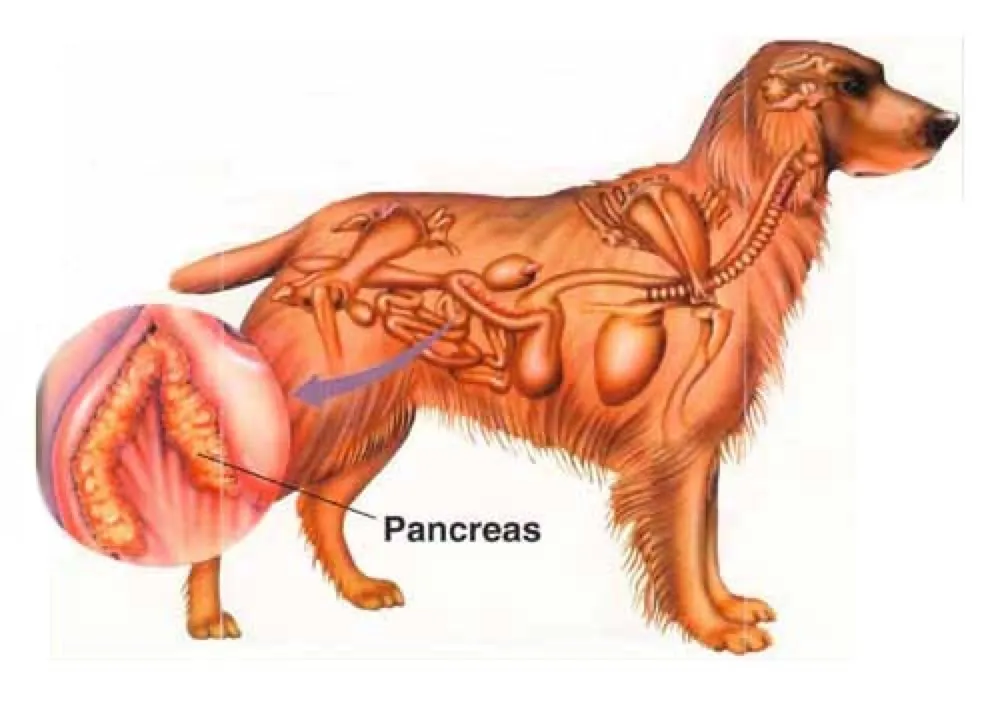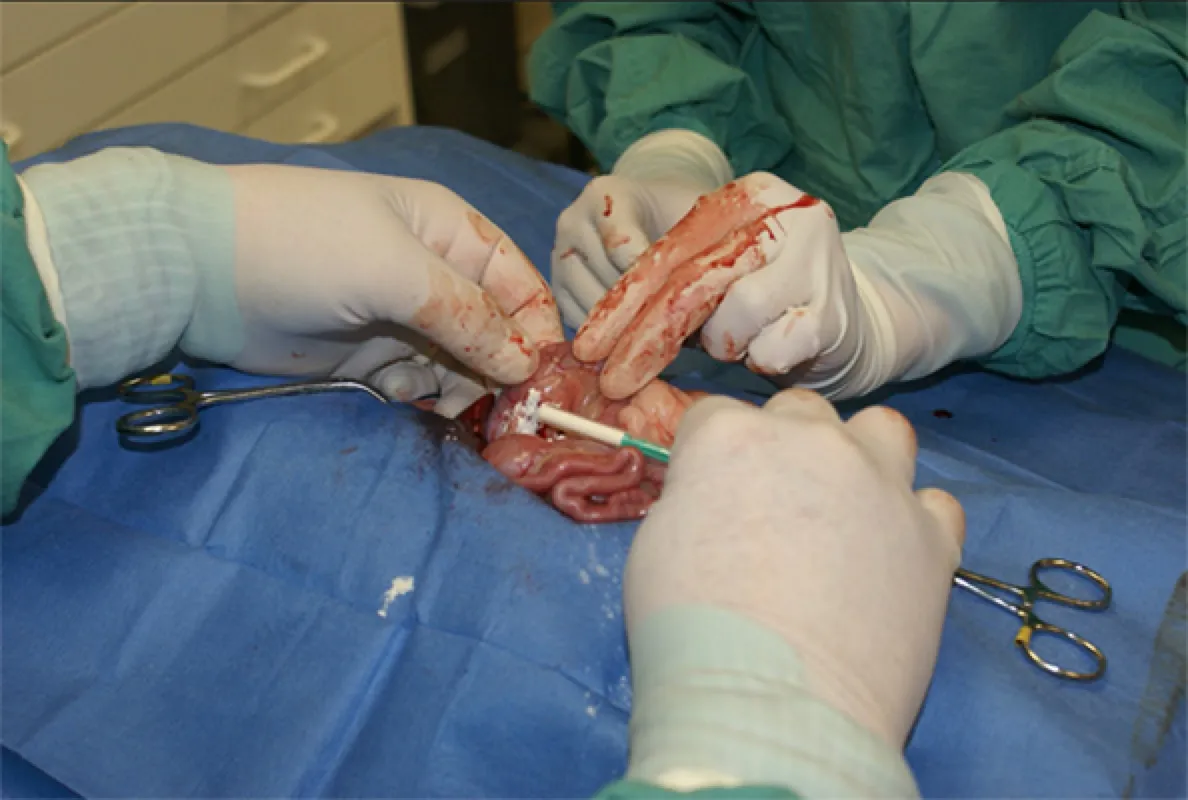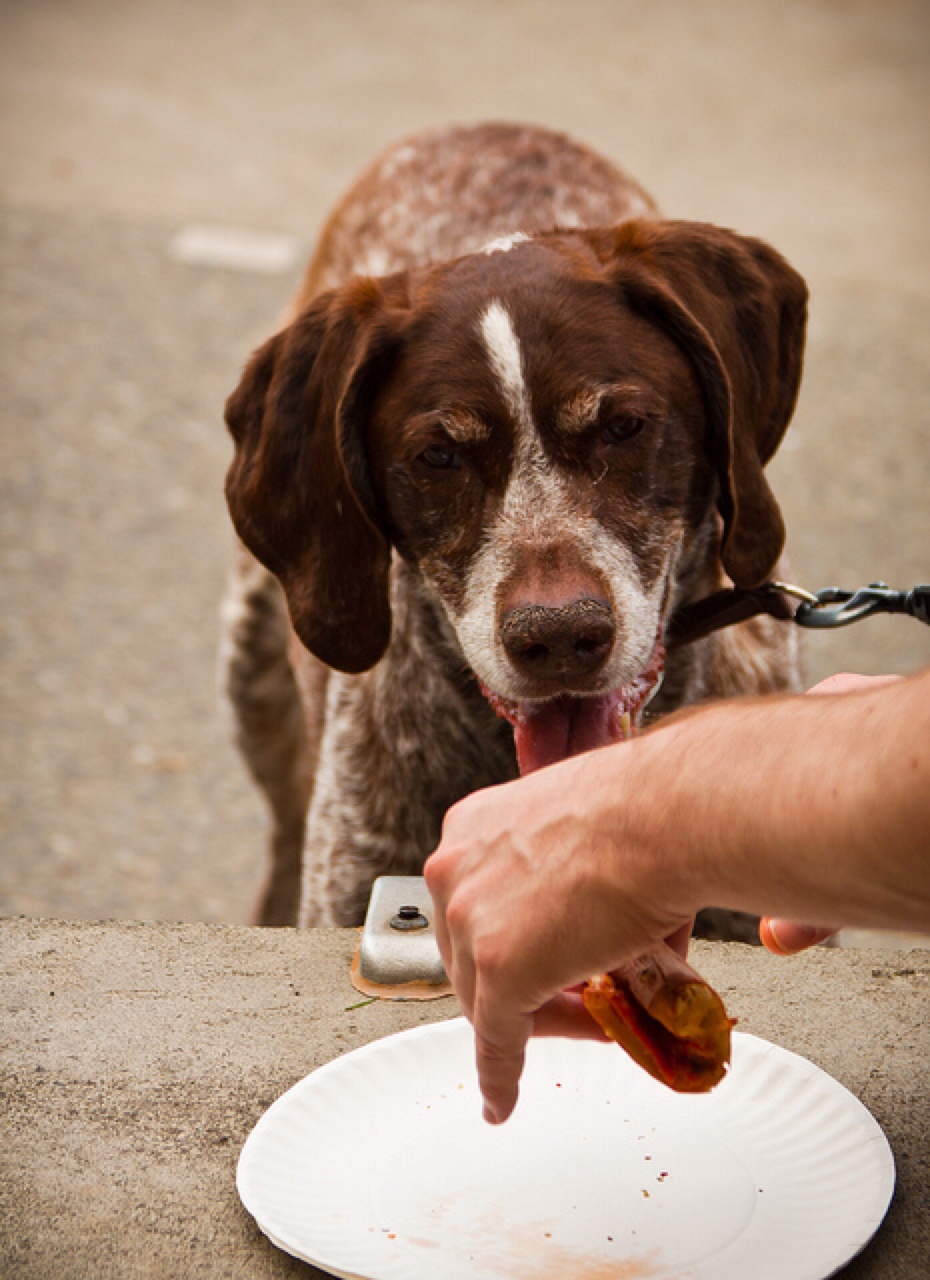Table of Contents
A common medical condition, pancreatitis in dogs is becoming more prevalent as the pet obesity epidemic progresses. Learn to recognize the symptoms of pancreatitis in dogs; if you notice any sudden changes in your pet’s appearance or behavior, consult your veterinarian immediately.
What is Pancreatitis?

Inflammation of the pancreas is referred to as pancreatitis. The condition can be mild, with only swelling of the pancreas, or severe; in this case, digestive enzymes spill into the body cavity, damaging internal organs. An acute (fast-onset) incident of pancreatitis in dogs may become chronic or “relapsing,” with recurring inflammation.
Normally, inactivated pancreatic enzymes stored in the pancreas are released into the intestines when a snack or meal is fed. In the intestines, the pancreatic enzymes can then assist in the breakdown of food particles in preparation for absorption into the body. In a dog with pancreatitis, the inciting factor causes inactivated enzymes stored by the pancreas to activate while still inside the pancreas. Veterinary Centers of America describes this process as “a time-release capsule that suddenly bursts before it reaches its intended target.” The pancreatic enzymes then start to digest the pancreas itself, leak out into the body and wreak havoc on the internal organs, essentially digesting them.
What Causes Pancreatitis?
Pancreatitis in dogs can be caused by multiple, often unknown, factors. Premature activation of pancreatic enzymes can be related to:
- A high-fat meal or backwards flow of partially digested food up into the pancreas
- Chronic medical conditions
- Certain pet medications
Chronic conditions are often to blame for pancreatitis in dogs, such as diabetes, obesity, and metabolic conditions like hypothyroidism. The American Kennel Club Canine Health Foundation asserts certain medications can lead to the disease, such as immunosuppressant azathioprine, anticonvulsant potassium bromide, and chemotherapy drug I-asparaginase.
Why is the Pancreas Important?

The pancreas is located in the lower right quadrant of the abdomen, nestled among the gastrointestinal system. (animalpetdoctor.homestead.com)
A vital organ, the pancreas produces enzymes that aid in food digestion, along with regulatory hormones like insulin. Without a fully-functioning pancreas, a pet struggles to eat and retain weight. Secondary conditions may develop with severe weight loss and malnutrition, including vitamin deficiencies and organ failure. Insulin, which is produced by the pancreas, allows the movement of glucose into the cells of the body – providing them with energy. Without this essential fuel, the cells of the body cannot function well, if at all, and fatigue, coma or even death can occur.
Symptoms of Pancreatitis in Dogs
In mild cases, some pets may be asymptomatic. According to the Texas A&M University’s Gastrointestinal Laboratory, the following are the most common symptoms of pancreatitis in dogs:
- Anorexia/Not eating (91 percent)
- Vomiting/Throwing up (90 percent)
- Weakness or fatigue (79 percent)
- Abdominal/Belly pain (58 percent)
- Dehydration (46 percent)
Like in many medical conditions, indicators of pancreatitis in dogs differ from the disease in humans, where abdominal pain is the most frequent symptom.
Diagnosing Pancreatitis

Often, pancreatitis in dogs is difficult to diagnose, due to the generality of its symptoms and lack of diagnostic tests. Abdominal x-rays are frequently taken to rule out other conditions. Ultrasound may be performed to examine the pancreas. Up until recently, the best blood test available was called a PLI that determined if there were elevated levels of pancreatic enzymes in the bloodstream. The PLI is better for ruling out a disease, whereas a newer blood test called a Pancreatic-Specific Lipase is able to detect 83% of pancreatitis cases.
A biopsy of the pancreas is considered the most effective method of diagnosing pancreatitis in dogs, but it is also the most invasive. In mild cases, the procedure may not be successful, as inflammation can be limited to specific areas of the pancreas not reached with a biopsy. Often pets with pancreatitis are obese or have secondary medical conditions that make them high-risk patients; in these cases, anesthesia for the biopsy can place these dogs in even greater danger.
Treating Pancreatitis
The earlier the pancreatitis is detected, the more likely treatment will be successful. Mild pancreatitis in dogs requires two to four days of hospitalization while intravenous fluids, intestinal support medications, and pain medications are given. Treatment requires shutting down the pancreas and its excretion of enzymes to halt internal damage – no food or fluid is given orally to avoid activating enzyme production.
While a pup recovers from pancreatitis, solid food is gradually reintroduced throughout the course of care, although meals are bland and low in fat so as to not overstimulate the pancreas. An article by Cuteness, The Best Dog Foods for Dogs with Pancreatitis, gives a rundown of which foods to look for; everything from a prescription diet to what you can purchase over-the-counter (called “commercial foods”), as well as homemade food, which includes boiled chicken and white rice. Often, veterinarians will first prescribe a specific diet for at least a short time until full recovery has been made, however some pups will be on prescription food for the rest of their lives.

While your dog rests and follows a fairly strict diet, other medications may be administered to cease symptoms of pancreatitis in dogs; these drugs include antiemetics, antidiarrheals and anti-inflammatories.
Severe cases involve extended hospitalization or even surgery to repair internal damage caused by digestive enzymes or inflammation.
How to Prevent Pancreatitis in Dogs
Keeping your pet at a healthy weight can help prevent pancreatitis, as well as numerous other obesity-related medical conditions. A high-fat diet has been linked to pancreatitis in dogs; Human table food, formerly known as “table scraps” and meaty treats are cited as common contributors. Make sure your pet gets plenty of exercise and has a well-balanced diet.
Severe cases involve extended hospitalization or even surgery to repair internal damage caused by digestive enzymes or inflammation.
The content is not intended to be a substitute for professional veterinarian advice, diagnosis, or treatment. Always seek the advice of your veterinarian or other qualified health provider with any questions you may have regarding a medical diagnosis, condition, or treatment options.
Featured image via Flickr.com/petithiboux.









